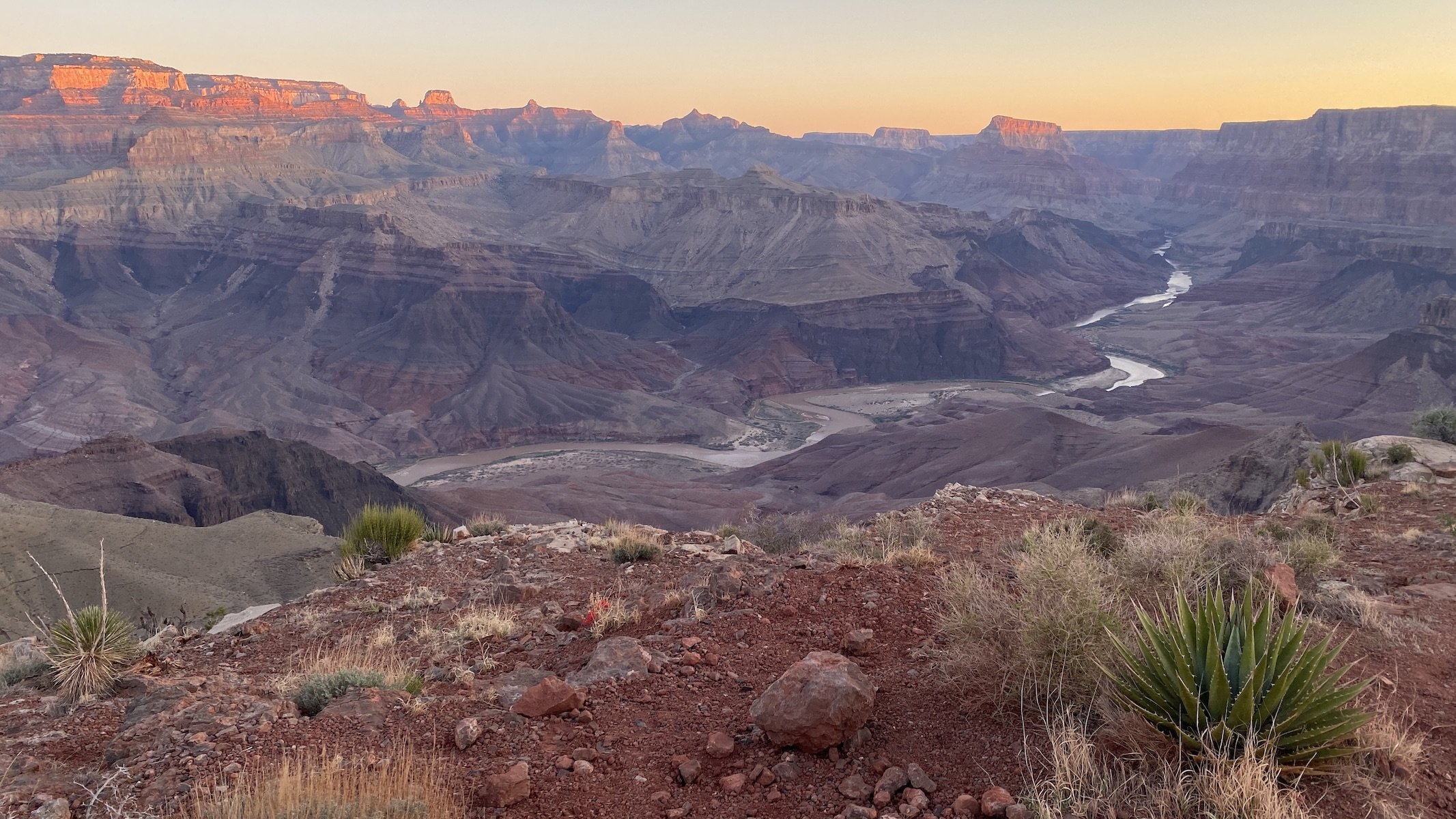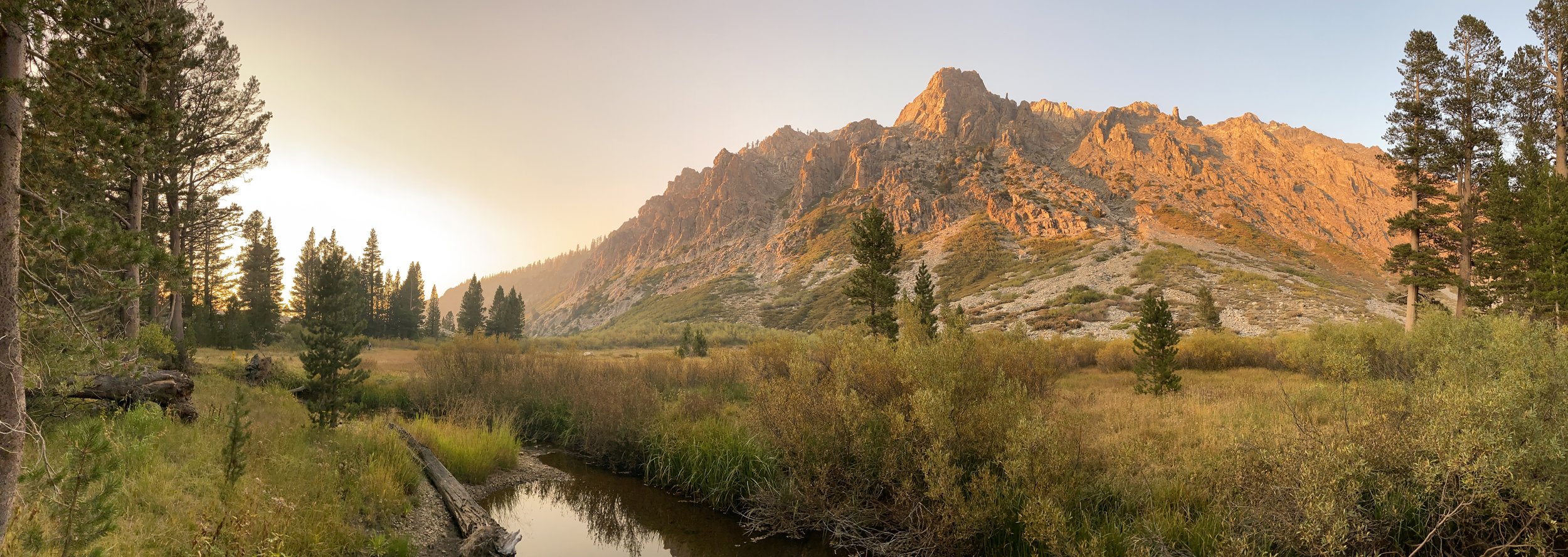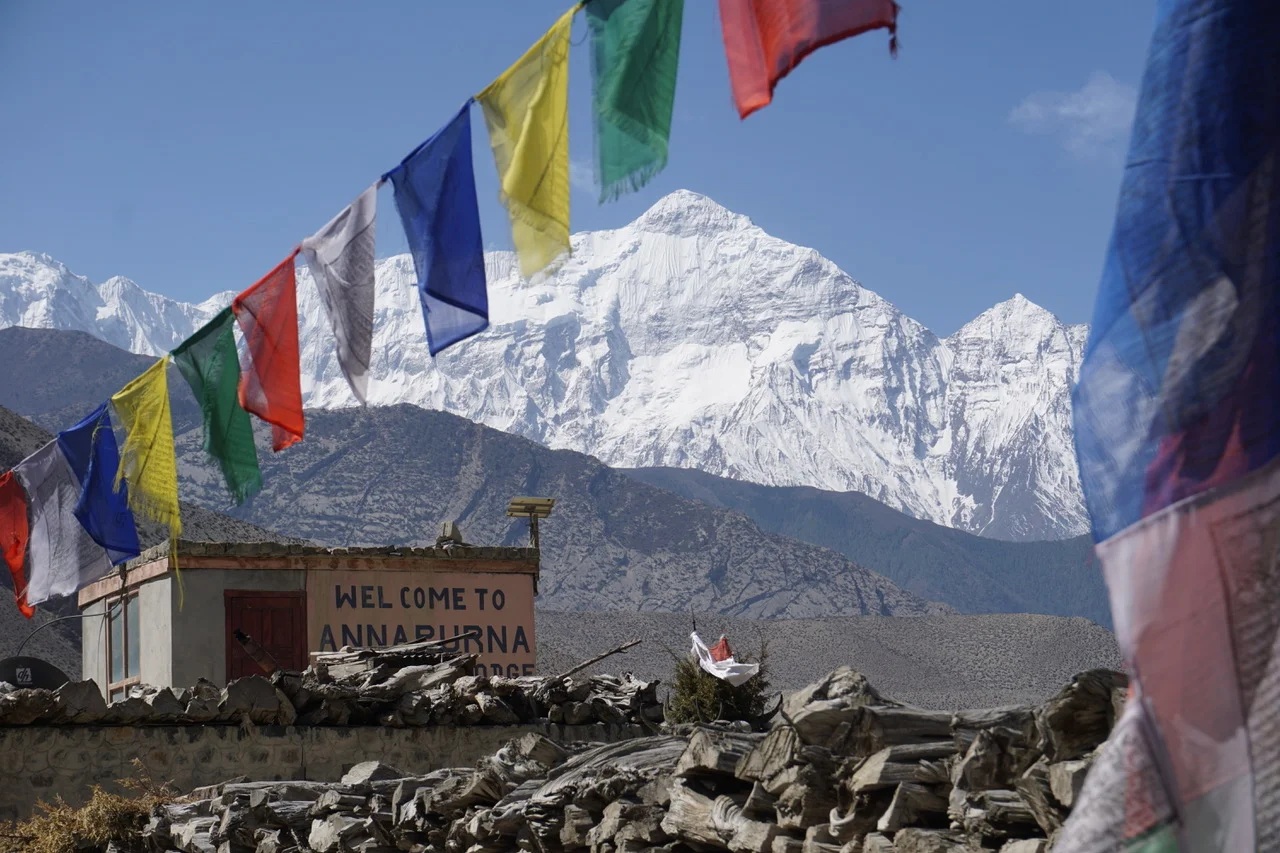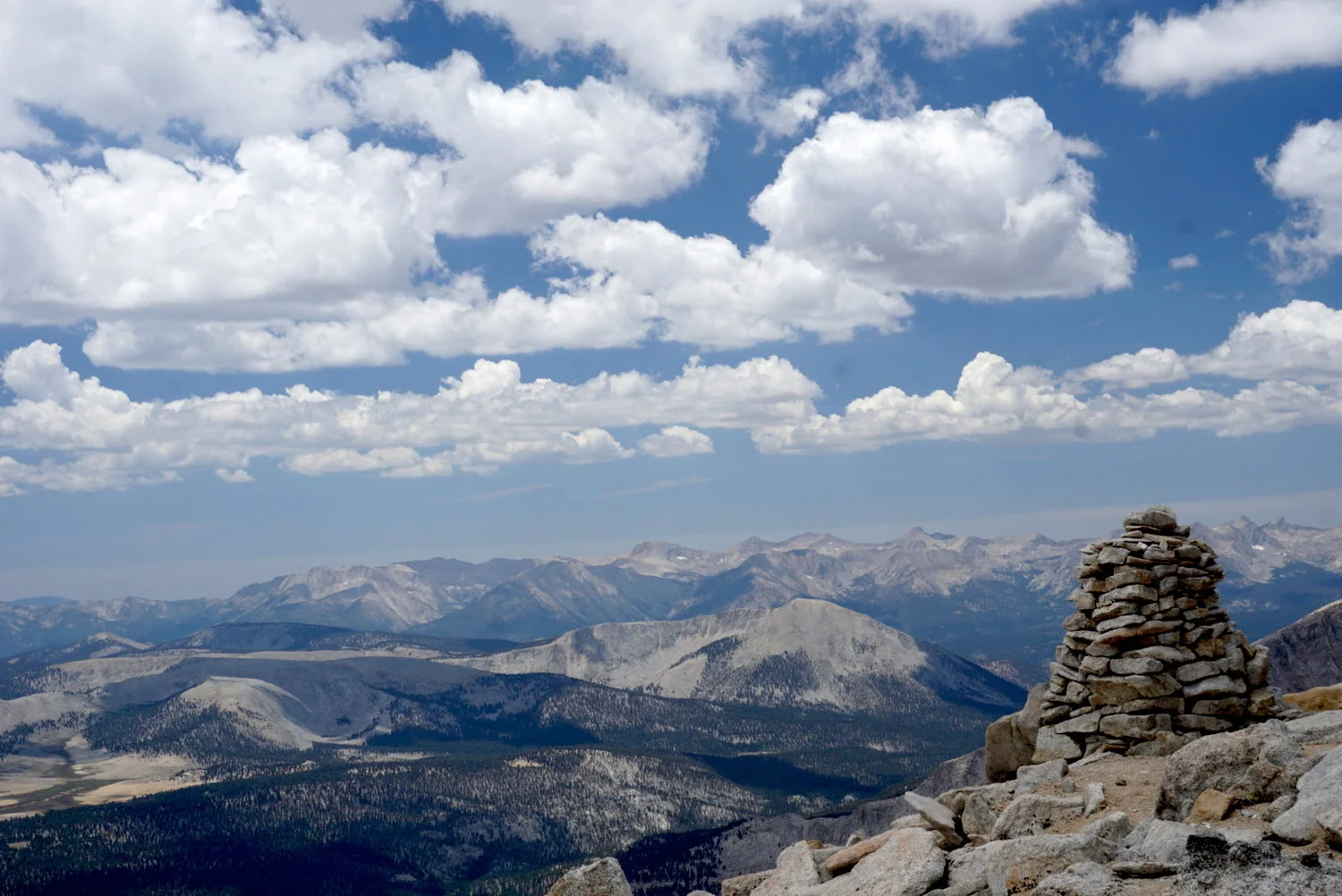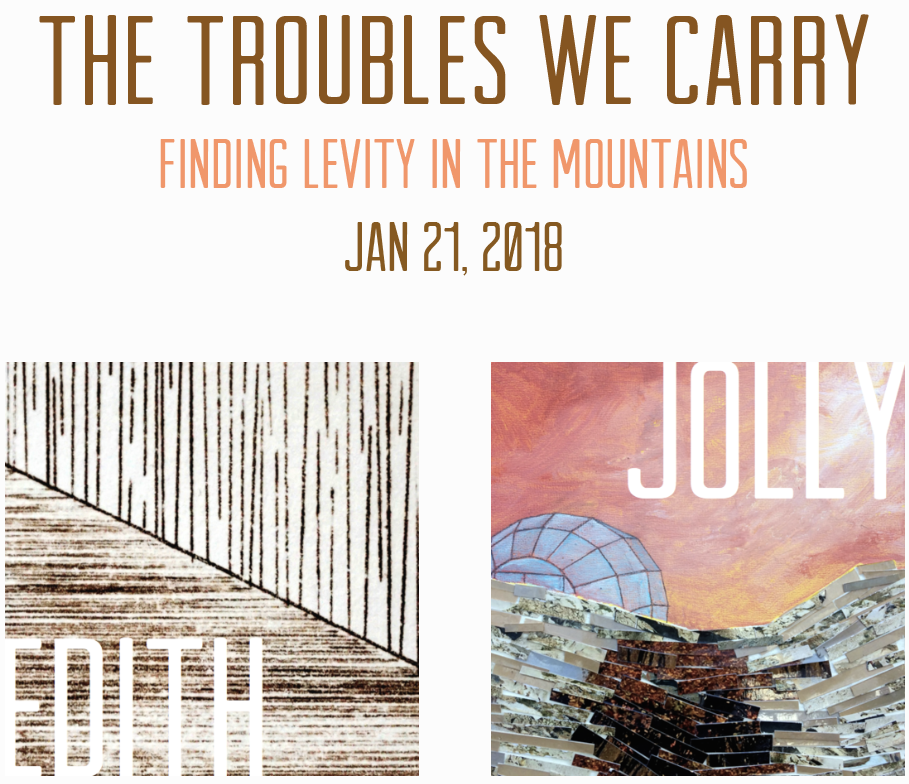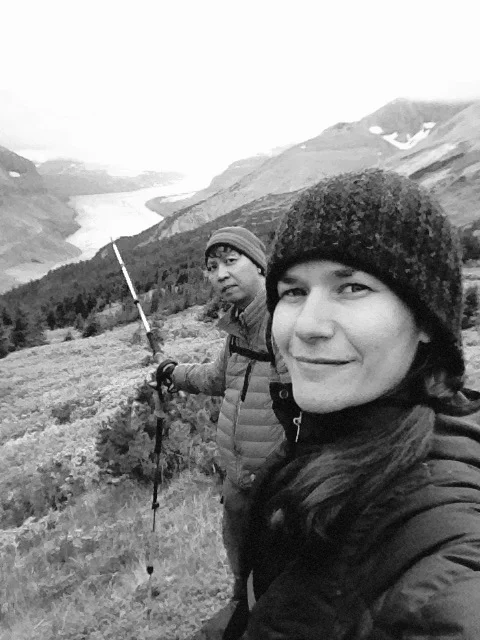The theme of this month's show is travel to Nauwmabcwoc (pronounced Nah-wahm-ah-bac-wohk). Never heard of it? It's a massive land area that spans much of the Western U.S. and Canada, and includes Nevada, Arizona, Utah, Wyoming, Montana, Alberta, British Columbia, Washington, Oregon and California. My friends Edith and Jolly recently took a month-long camping road trip through this area, documenting it through photos, sketches, words and watercolors.
Take a look around the site to get a taste of their adventures through 6,000 road miles, dozens of trail miles, 10 states and provinces, and two countries. The show is titled "North by Northwe(s)t" as a nod both to my friends' general direction of travel, and to the fact that they experienced copious amounts of wet weather during most of their trip.
To accompany the images that make up this month's show, I hope you'll enjoy Edith travelogues below.
May you scratch that wanderlust itch,
Jed
We started our trip with a visit to our good friends Christine, James, and their wonderdog Buster at their home just outside of Zion. We spent a couple of days exploring one of our favorite parks during the peak of the summer, when a dip in the powerful Virgin River -- which is responsible for much of the dramatic topography of this beautiful land -- felt like heaven. Our buddies are some of the most generous people one could hope to befriend, and, perhaps to prove this point, James lent us his 4x4 pickup truck to let us explore the road less traveled. It was thrilling to drive some of the area's dirt roads, parts of which would make a Subaru driver blush. We caught this serene moment just before sunset on our last night.
We headed north to the Wasatch Mountains near Park City, Utah, where we spent a few days camping and exploring before attending our friends Debbie and David's wedding. We joined local families enjoying their Sunday by a pond in Wasatch Mountain State Park, and though it was probably obvious we were the only non-locals, we felt right at home. The wedding was at Robert Redford's Sundance resort, a lovely place for a beautiful celebration. Though afternoon thunderstorms threatened, fortunately they never quite materialized.
From northern Utah, we headed north into Wyoming to Grand Teton National Park. By this point -- about a week into the trip -- we had experienced rain every single day. What we didn't know is that the pattern would continue, and that for the first three weeks we would only see two rain-free days.
While at Grand Teton, we enjoyed an 11-mile hike up, up, up into the mountains to get to the base of the 13,000-ft namesake Grand Teton, a small portion of which is visible in the photo. About 15 minutes after I snapped this photo, we were caught in a hell of a downpour. It was then I realized that the extra waterproofing I applied to our rain shells before leaving home wasn't worth the $15.
Next up, we spent three nights camping in Yellowstone. The park is absolutely massive and feels other-worldly with its bubbling mudpots, fumaroles, geysers and other geothermal features. One would think that the park service might harvest the geothermal energy and provide campers with hot water at the faucet. Not so.
Yellowstone is also known for its incredible wildlife, and we were not disappointed by our numerous encounters with its megafauna. At one point, our little car was surrounded by a herd of bison crossing the road, including one particularly bossy-looking, Godfatherly specimen that was staring at us much too close for comfort. It probably didn't help that everyone around us was driving large pickups and SUVs and that ours was the only bison-sized car stuck in this traffic jam. It was at that point that I wondered how a call to our car insurance company would play out in the event Godfather Bison wanted to show us who was going to win. No such encounter ensued, luckily.
We are now on our way to Glacier National Park, in northern Montana, on the Canadian border. On the other side of the border is Waterton Lakes National Park. Together, the two parks comprise an "international peace park" -- a very nice concept, we think. We spent last night near the college town of Bozeman, Montana, camping in the national forest at Hyalite Canyon. On our way north we followed the Gallatin River through a beautiful canyon. Remember the 90s film A River Runs Through It? The story was set (and shot) here, and indeed there were plenty of fly fishermen enjoying their Labor Day weekend in the shallow river.
After Glacier, we will head into the Canadian Rockies to explore Banff and Jasper national parks and surrounding areas before heading west to Vancouver and eventually south into the Pacific Northwest. We have good friends we look forward to visiting in Seattle, Portland and San Francisco. And we hear that they all have reliable plumbing and showers, too!
Summer is coming to a close and the crowds will be thinning after this holiday weekend. This morning we awoke to a solid layer of ice coating our site's picnic table, but home is warm and cozy wherever we pitch our tent.
Glacier National Park is a hiker's paradise and is simply stunning. Gravity-defying glaciers hang onto mountains seemingly by luck, their melting waters feeding rivers and lakes of unbelievable opaque colors, from sky blue to turquoise. The wild animals must like it too, because there are plenty majestic creatures in the park -- moose, mountain goats and bears were among the species we saw. In fact, bears were quite present where we camped. Each morning there was a new prominently placed present (usually full of berry seeds) left by a bear in the campground. We slept with one eye open.
If the hiking is great, driving the park is also a blast. Going-to-the-Sun Road is an engineering feat that meanders through the park and over the Continental Divide, with amazing views at almost every turn.
We took this photo while hiking to Grinnell Glacier (on the right in the distance). It was gorgeous and proved to be only an appetizer on our way to many more glaciers in the following days. We learned that in the middle of the 19th century the park was home to 150 glaciers; sadly, today there are only 25 remaining, and scientists predict those too will be gone in the next 2 decades. So if you haven't been and would like to visit Glacier NP before it becomes a memorial park, find a low-carbon way to do it, and do it soon.
After picking up supplies in Calgary, our first destination in Canada was Banff National Park, where we camped for two nights. The natural features are fantastic -- jagged mountains, glacier, lakes and rivers everywhere you look. Unfortunately, the park is rather commercialized and developed, with large buildings built senselessly next to amazing natural wonders. It's also a huge tourist trap, with mediocre $6 coffees awaiting you. We later learned what locals call it: BANFF - Beware Absolutely Nothing For Free. But it is gorgeous nonetheless.
The road connecting Banff to Jasper National Park is the 230-km Icefields Parkway, called by some the most beautiful drive in the world. I don't know if we are ready to make such a definitive statement, but we were certainly in awe. The road passes along the Columbia Icefield, the largest in the Rockies. We spent an adventure-filled couple of days in this area. We hiked the Athabasca Glacier with a guide who's been leading hikes there for more than 30 years. He pointed out that glacier morphology is like geology in fast-forward, but even he can't believe how rapidly the glaciers are receding. Even considering this dramatic retreat, we couldn't quite comprehend how massive the glacier was until we were on it.
In the photo you can see the guide's guide -- George, a husky-golden retriever mix, who took a nap on the ice every time we stopped to check out interesting features on the glacier.
Even when not hiking on actual glaciers, in this land you're surrounded by them. We took a short but steep hike up Parker Ridge to get a view of Saskatchewan Glacier and we imagined that a big chunk of LA would easily fit into it. Jolly is pointing to the approximate location of downtown LA in this scenario.
And we had moments to rest, too. The weather is reliably unpredictable in these high mountains. Gratefully, many campgrounds have cook shelters -- covered, semi-indoor structures with three or four walls and a furnace. The shelters are perfect for preparing and eating meals during (often relentless) rain, and because other campers use them too, you can't help but make new friends while you keep warm and dry.
Jolly and I have taken long road trips many times before, but in the past few days we've befriended more fellow travelers than on most of our previous trips combined. There were Don and Bob, white-haired adventurers from northern Alberta who've been backpacking and kayaking deep into the backcountry together for 30 years, each time leaving their wives at home for a week or two. They prefer sleeping in minimalist bivouac sacks rather than a tent, even when it's minus 30 degrees Celsius. That way you can see the Northern Lights better. There were Sophie and Jean-Marie from Belgium, who flew all the way to Canada to see the big parks and then do a weeklong trek through Vancouver Island. And there was Ian from England, who is on a 9-month solo trip on a Triumph motorcycle. He started in Alaska and is heading all the way to Argentina. Perhaps we'll see him in California.
Yesterday we had two more adventures worth mentioning while hiking in Jasper. Less than an hour into our hike we saw two grizzly bears...a new experience for us. We've seen plenty of black bears while hiking (the generally smaller and mellower species), but grizzlies are another story!
The other jaw-dropping moment: we witnessed a glacier "calving" -- a cracking noise followed by a large chunk of ice splitting and falling hundreds of feet down Mount Edith Cavell from Angel Glacier. We were amazed but also saddened to be witnessing a moment that was to us quite poignant -- climate change is having undeniable impacts that you can literally see in action on the world's glaciers.
Our adventures continue as we head southwest, where we'll see more trees, less glaciers, old friends, and where we'll soon be paying in American dollars once more.






